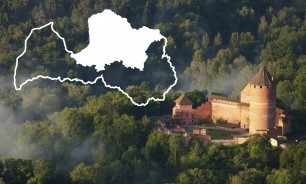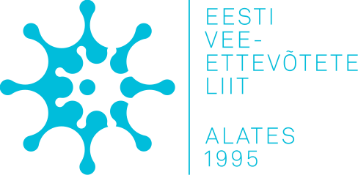Estonian Water Work Association (EVEL)
specialists’ study visit to Latvia
15-17 April 2019
Summary:
- Purpose of the study visit
The main purpose of the study visit was to get an overview of the current state of water management in Latvia and to gather information on the plans that Latvians have for the future.
Knowing before the visit that the European Union support measures for Latvians opened up in the same period as in Estonia, we intended to find out during the study visit what were the technical preferences of Latvian water companies during periods of large-scale investments and how they have solved the operation of these assets today. Also, the plan was to expand our horizons in national regulations and the overall structure of water management.
And, most importantly, in addition to gathering individual knowledge, intention was to use the group’s advantage, by initiating an immediate debate on what has been seen.
- Earlier study visits by EVEL:
Kingdom of Denmark – 2014
Kingdom of Belgium – 2015
Swiss Confederation – 2016
Portuguese Republic – 2017
Republic of Finland – 2017
Kingdom of Spain – 2018
- About Latvian water management sector in general
In the majority of Latvia, the water business is carried out by companies that have been created for that activity and belong to one or more local authorities.
Ownership is related to the service area, i.e. like in Estonia, a water company usually provides services in the area in which the municipality owns the company.
In general, technical solutions and day-to-day operations in the Estonian and Latvian water sectors are quite similar. The main differences can be seen in the use of manpower and handling of sludge. The number of employees per residents served is slightly higher in Latvia, due to the fact that the service areas of Estonian water companies have become larger than in Latvia in connection with the mergers taken place over the recent years. The tendency that in merging only some of the staff working in the merged water company is taken over causes a situation where the service areas expand, but the number of employees only increase slightly, if any.
It was also noticed that the Latvians use slightly simpler technology when it comes to automation and remote monitoring. This created a discussion within the group about whether sensors and automation, which are widely used in Estonia, would ensure continuity of service in the event of an interruption of electricity supply? In that case, simpler technology is an advantage. Similarly, the technology that is simpler does not need large-scale investments and further additional investments after becoming depreciated. In the wastewater treatment, classic flow-through treatment systems are prevalent in Latvia. Sequencing batch reactors that have become widely used in Estonia in recent years are not used.
The treatment of sewage sludge, which is a big concern in Estonia, has been solved in quite a simple way in Northern Latvia by directing all dewatered sewage sludge to agricultural digesters. From there on, the sludge handling becomes already a concern of the owner of a digester.
The effluent parameters are generally higher than in Estonia. In Latvian cities, the total phosphorus limit is 2 mg/l and even higher in smaller settlements.
In North Latvia, the same aquifers are used for the extraction of raw water as in Estonia and the requirements for drinking water are similar to those in Estonia.
Also, it was interesting to see that the roads in the settlements were in a better condition than the motorways.
- Day One – 15.04.2019
- Water company of the City of Valmiera – Valmieras Udens
The Valmiera Water Company provides water and sewerage services to the city of Valmiera with a population of approximately 22,000. The City of Valmiera is peculiar because the industries in the region have started building new apartment blocks to attract workforce. It is therefore an area where the population could start to increase.
The water company is active in several areas. In addition to water service, the company provides heat supply, offers laboratory services and carries out various construction works. The company had a turnover of 8 million euros last year and a profit of about 0.5 million. The largest share of the profit, approximately 30%, came from the external services unrelated to water and heat supply.
The company employs 38 employees.
The sludge with a dry matter content of 12% is handed over to the operator of a digester owned by the agricultural companies in the region.
The price for the service is 2.37 EUR/m3 which has remained unchanged for approximately 5 years.
- Water company of Smiltene region – Smiltene NKUP
Like Valmiera, the company is active in several areas of a utility sector. Besides the water service, urban maintenance and property management services are provided. In addition to the City of Smiltene, the service area of the Smiltene Water Company includes seven other areas around the city.
In order to demonstrate the development of water and sewage facilities in smaller regions, the water company introduced two different regions, one of which carried out extensive reconstruction work with a co-financing from the European Union, and the other that did not. In both regions, the wastewater treatment plants use stabilization ponds as a post-treatment stage.
Smiltene NKUP has established a single price of 2.82 EUR/m3 for the services provided in all service areas.
- Day Two – 16.04.2019
Water company of Cesis – Vinda
It was astonishing that although the company is constantly carrying out projects co-financed by the European Union, its own contribution in the projects has been financed by the water company itself and no loan has been taken. Plus, each year, the company pays small dividends (EUR11,500/years) to its owner.
The company employs 33 employees. Here, for the first time during the study visit, the topic of salaries paid in the sector was discussed. In the water company, the average net salary is 750 EUR/month. In addition, each employee is granted 5 weeks leave.
Given that Cesis is situated on the hills, there is no need to pump wastewater. All wastewater collected from the city is diverted to the main pumping station by means of gravity, and from there on, further pumped into the wastewater treatment plant.
Service tariff – 2.20 EUR/m3.
- Water company of Sigulda – SIA Saltavots
The whole group was amazed at how the company had managed to build such a beautiful office from an old water tower. Such notional objects present a very good image of the water sector, which is otherwise invisible.
Sigulda is known as a tourist area and therefore, does not face the problems typical to wastewater treatment plants having industrial customers.
Service tariff – 2.48 EUR/m3.
- Water company of Limbazi – SIA Limbažu Komunalserviss
The company provides water and sewage services to the City of Limbazi and 6 settlements around the city. The city has a total of ca 7,500 residents.
The company employs 33 employees. In addition to water and sewage services, the company provides urban maintenance services. This also explains the large number of employees in the company. Major problems are related to the local dairy industry, whose pre-treatment works have been fully depreciated and which therefore is discharging wastewater to the water company’s domestic wastewater treatment plant at significantly higher concentrations than the treatment plant can take. In the past, a “symbolic” fine has been imposed on the customer, but soon, a claim for the actual costs will be issued. The company uses water towers to direct drinking water to consumers, which help to even up consumption peaks while also being cost-effective.
It was also interesting to see that the interior piping at the second level booster pump station had been made of PE pipes.
More information:
Estonian Water Works Association
Web: www.evel.ee
E-mail: evel@evel.ee
Lauri Lagle – Engineering Adviser, lauri.lagle@evel.ee, ph +372 51 22 587


